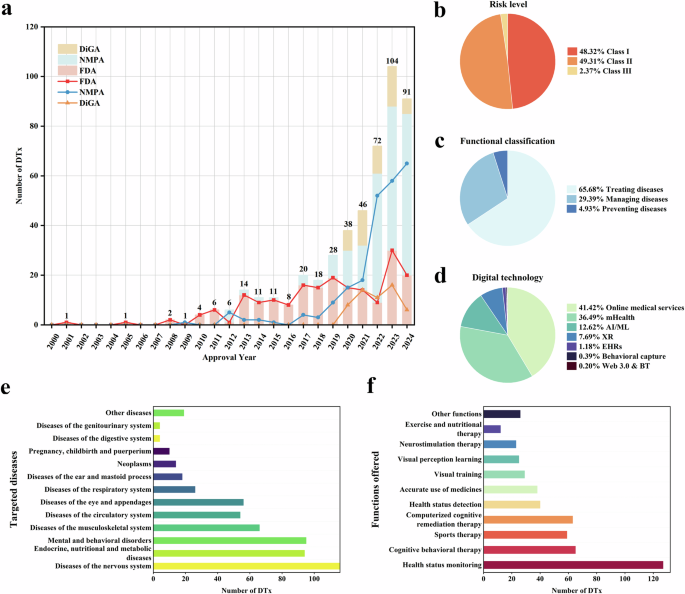Asia Pacific Self-Monitoring Blood Glucose Devices Market Size

Asia Pacific Self-Monitoring Blood Glucose Devices Market Size
The Asia Pacific Self-Monitoring Blood Glucose Devices Market was worth USD 2.33 billion in 2024. The Asia Pacific market is expected to reach USD 3.68 billion by 2033 from USD 2.45 billion in 2025, rising at a CAGR of 5.23 % from 2025 to 2033.

The Asia Pacific self-monitoring blood glucose devices market refers to the part of medical diagnostics that enables individuals with diabetes to measure and track their blood sugar levels at home or on the go. These devices typically include blood glucose meters, test strips, lancets, and lancing devices, allowing users to manage their condition effectively without relying solely on clinical visits. As diabetes prevalence continues to rise across the region, the importance of self-monitoring tools in preventing complications and maintaining glycemic control has become increasingly evident.
According to the International Diabetes Federation, over 300 million adults in the Asia Pacific are living with diabetes, accounting for nearly half of the global diabetic population. In China alone, as reported by the Chinese Diabetes Society, more than 140 million people suffer from the disease, making it one of the most affected countries worldwide. The Indian Council of Medical Research also noted a steep rise in diabetes cases in India, with an estimated 77 million individuals diagnosed as of 2023.
In addition to rising disease burden, growing awareness about proactive health management is driving adoption of self-monitoring devices. Australia’s National Diabetes Services Scheme reported a significant increase in home glucose testing kits being dispensed through pharmacies, indicating a shift toward patient-centric care models.
Japan and South Korea have also seen increased use of smart glucometers integrated with mobile health applications, reflecting broader trends in digital healthcare adoption.
MARKET DRIVERS
Rising Prevalence of Diabetes Across the Region
One of the primary drivers of the Asia Pacific self-monitoring blood glucose devices market is the escalating prevalence of diabetes, particularly type 2 diabetes, across both developed and emerging economies. Countries such as China, India, Thailand, and Malaysia are witnessing a sharp rise in diabetic populations due to changing dietary habits, sedentary lifestyles, and genetic predispositions. According to the International Diabetes Federation, the Asia Pacific region accounts for nearly half of all diabetes cases globally, with China and India alone contributing over 200 million patients. The Chinese Diabetes Society reported that diabetes incidence in China has doubled over the past decade, prompting increased demand for home-based monitoring solutions. In India, the Indian Council of Medical Research highlighted that diabetes is no longer confined to urban centers but is rapidly spreading to rural areas, where access to regular clinical monitoring is limited. This has led to a surge in home glucose testing kit sales, especially through local pharmacies and e-commerce platforms. Australia has also experienced a steady rise in prediabetes and diabetes cases, reinforcing the need for self-monitoring tools among high-risk populations.
Increasing Awareness and Government Initiatives Promoting Diabetes Management
Another major driver fueling the growth of the Asia Pacific self-monitoring blood glucose devices market is the rising awareness around diabetes prevention and management, supported by government-led public health campaigns and policy initiatives. As diabetes emerges as a leading cause of morbidity and mortality, several governments have prioritized preventive healthcare strategies that encourage regular blood sugar monitoring. Like, national diabetes control programs have been launched in multiple Asia Pacific countries to improve early diagnosis and self-care practices. In India, the Ministry of Health introduced the National Programme for Prevention and Control of Cancer, Diabetes, Cardiovascular Diseases and Stroke (NPCDCS), which includes provisions for community-level screening and promotion of home glucose monitoring. As per the Singapore Health Promotion Board, awareness drives and subsidized health check-ups have significantly boosted diabetes screening rates, leading to higher adoption of self-monitoring tools. Similarly, Japan’s Ministry of Health, Labour and Welfare has incorporated home glucose monitoring into its national diabetes management guidelines, emphasizing its role in reducing hospitalization risks.
High Cost of Glucose Monitoring Devices and Test Strips
A significant restraint affecting the Asia Pacific self-monitoring blood glucose devices market is the relatively high cost of glucose meters and associated test strips, which limits accessibility for a large portion of the population, particularly in lower-income countries. While these devices are essential for effective diabetes management, affordability remains a critical barrier to widespread adoption. In India, as reported by the Indian Journal of Endocrinology and Metabolism, the average diabetic patient spends a significant amount annually on test strips alone, a significant expense given the country’s per capita income. Even in more developed markets such as Australia, out-of-pocket costs for test strips remain a concern despite partial reimbursement under the National Diabetes Services Scheme. Also, the introduction of advanced continuous glucose monitoring systems has further widened the affordability gap, as these newer technologies often come at a premium price point.
Lack of Reimbursement Policies and Insurance Coverage
Another key constraint impacting the Asia Pacific self-monitoring blood glucose devices market is the inconsistent availability of reimbursement policies and inadequate insurance coverage for diabetes-related supplies. Unlike in Western markets, where insurance plans often cover a substantial portion of home glucose monitoring expenses, many Asia Pacific countries offer limited or no financial support for these essential tools. Also, a smaller percentage of diabetic patients in India receive any form of insurance coverage for glucose monitoring supplies, despite the country having one of the largest diabetic populations globally. The Indian Council of Medical Research noted that out-of-pocket expenses account for a major share of diabetes-related healthcare spending, discouraging consistent use of self-monitoring devices.
In Indonesia, the Ministry of Health acknowledged that national health insurance schemes provide minimal coverage for test strips and glucometers, forcing patients to bear the full cost of monitoring. So, this lack of financial support leads to irregular testing and poor disease control.
MARKET OPPORTUNITIES
Integration of Digital Health Technologies and Smart Glucometers
A major opportunity shaping the Asia Pacific self-monitoring blood glucose devices market is the integration of digital health technologies into glucometer design, enhancing functionality, user engagement, and remote monitoring capabilities. The proliferation of smartphones, mobile health apps, and cloud-based data storage has enabled manufacturers to develop smart glucose monitoring systems that cater to tech-savvy consumers. Samsung Medical Center reported a significant increase in smartphone-linked glucose meter usage among younger diabetic patients, who prefer real-time tracking and data sharing with healthcare providers.
In India, startups such as Wellthy and BeatO have introduced AI-powered glucometers that sync with mobile apps to provide personalized insights and medication reminders. As per MedTech Dive, online sales of smart glucose meters in India grew notably between 2021 and 2023, driven by increased telehealth consultations and digital prescriptions.
Expansion of Telemedicine and Remote Patient Monitoring Programs
The rapid expansion of telemedicine and remote patient monitoring programs across the Asia Pacific is creating new opportunities for the self-monitoring blood glucose devices market. With the increasing adoption of virtual consultations and home-based care models, there is a growing demand for home-use diagnostic tools that can seamlessly integrate with telehealth platforms. Like, telemedicine utilization in the Asia Pacific increased significantly during recent years, particularly in response to public health challenges. In China, the National Health Commission mandated that telehealth services incorporate remote glucose monitoring as part of chronic disease management protocols, encouraging wider use of self-monitoring devices. In Australia, the Australian Digital Health Agency reported a key rise in remote glucose monitoring consultations between 2021 and 2023, highlighting the increasing reliance on patient-generated data for treatment decisions. India has also witnessed a boom in telehealth-driven diabetes management, with platforms like Apollo Telehealth and Practo integrating home glucose monitoring into their service offerings.
MARKET CHALLENGES
Limited Awareness and Low Adherence to Regular Monitoring in Rural Areas
A pressing challenge facing the Asia Pacific self-monitoring blood glucose devices market is the limited awareness and low adherence to regular glucose monitoring, particularly in rural and semi-urban areas. Despite rising diabetes prevalence, many patients remain unaware of the importance of consistent blood sugar tracking, leading to suboptimal disease management. Also, diabetes education programs in rural parts of India, Indonesia, and the Philippines remain underfunded, resulting in poor patient understanding of self-monitoring benefits. The Indian Council of Medical Research found that a smaller proportion of diabetic patients in rural districts regularly monitor their blood sugar levels due to misconceptions and a lack of guidance. As per the Indonesian Diabetic Association, many patients rely on intermittent clinic visits rather than daily self-monitoring, increasing the risk of complications.
Regulatory Hurdles and Product Standardization Issues
Another significant challenge affecting the Asia Pacific self-monitoring blood glucose devices market is the complexity of regulatory frameworks and product standardization requirements across different countries. Each nation has distinct approval processes, quality control standards, and labeling regulations, which complicate market entry for manufacturers seeking regional expansion. According to the Asia-Pacific Economic Cooperation (APEC), harmonization of medical device regulations remains incomplete, leading to prolonged approval timelines and increased compliance costs for international players. In India, the Central Drugs Standard Control Organization introduced stringent classification rules under the Medical Devices Rules 2023, requiring detailed post-market surveillance and conformity assessments before granting approvals. Japan’s Pharmaceuticals and Medical Devices Agency enforces strict performance evaluations, while Australia’s Therapeutic Goods Administration mandates continuous post-market monitoring of diagnostic devices.
SEGMENTAL ANALYSIS
By Components Insights
The test strips segment constituted the largest component in the Asia Pacific self-monitoring blood glucose devices market by capturing 58.7% of total revenue in 2024. This dominance is primarily due to the recurring nature of test strip consumption, as patients require multiple strips on a daily or weekly basis depending on their condition. In India, where diabetes prevalence has surged substantially, the Indian Council of Medical Research noted a strong correlation between increased glucometer adoption and corresponding test strip purchases. Also, Australia’s National Diabetes Services Scheme recorded an increase in subsidized test strip distribution over the same period, reinforcing the indispensable role of this component in long-term diabetes management across the region.

The glucometer devices are emerging as the fastest-growing segment in the Asia Pacific self-monitoring blood glucose devices market, recording a projected CAGR of 9.3% through 2033. This progress is fueled by technological advancements, increasing awareness about diabetes care, and the rise in home-based testing preferences. In India, startups such as BeatO and Wellthy have introduced AI-enabled glucometers that sync with mobile apps, offering personalized insights and medication reminders. Australia has also seen government-backed initiatives promoting remote patient monitoring, further boosting demand for next-generation glucometers.
By End User Insights
The home/personal use segment commanded the Asia Pacific self-monitoring blood glucose devices market by accounting for 67% of total revenue in 2024. This development is linked to the growing preference for self-management of diabetes outside clinical settings, supported by increasing awareness and accessibility of affordable monitoring tools. Like, home-based glucose monitoring is critical for effective diabetes control, particularly in regions with high disease burden and limited access to frequent medical consultations. In China, a large share of urban diabetic patients prefer using glucometers at home, reducing reliance on hospitals for routine monitoring. India’s Ministry of Health launched the National Programme for Prevention and Control of Cancer, Diabetes, Cardiovascular Diseases and Stroke (NPCDCS), which includes provisions for community-level promotion of home glucose testing.
In Australia, the National Diabetes Services Scheme observed a significant increase in home-use device prescriptions, with a major share of Type 1 diabetic patients relying on personal glucometers for daily tracking.
The hospitals and clinics segment represented the fastest advancing end-user segment in the Asia Pacific self-monitoring blood glucose devices market, recording a projected CAGR of 7.6%. This growth is primarily driven by the increasing number of diabetes-related hospital admissions, expanding diagnostic infrastructure, and greater emphasis on early detection and in-clinic monitoring. Japan’s Ministry of Health, Labour and Welfare mandated the use of standardized glucometers in all outpatient diabetes clinics, ensuring consistency in patient monitoring. South Korea has also witnessed a surge in clinic-based glucose monitoring, particularly in rural areas where centralized healthcare facilities serve large populations.
REGIONAL ANALYSIS
China held the largest share of the Asia Pacific self-monitoring blood glucose devices market by contributing 29.8% of regional revenue in 2024. The country’s rise is underpinned by its massive diabetic population, rapid healthcare modernization, and increasing adoption of digital health technologies. The National Health Commission has prioritized diabetes management through national health strategies, encouraging the use of home glucose monitoring tools to reduce hospitalization rates. Domestic manufacturers such as Sinocare and Yicheng Biotech have gained traction by offering cost-effective yet reliable glucometers and test strips tailored for local needs.
India is emerging as one of the fastest-growing markets in the sector. The country’s growth trajectory is supported by a rapidly increasing diabetic population, rising healthcare expenditure, and proactive government initiatives aimed at strengthening diabetes care infrastructure. Medical tourism and digital health startups are further accelerating adoption, with companies like BeatO and Apollo Telehealth integrating home glucose monitoring into virtual care models. With increasing insurance penetration and improved access to diagnostic tools, India’s self-monitoring blood glucose devices market is poised for robust expansion.
Japan exhibits a pioneering adoption of smart monitoring technologies. The country leads in the deployment of advanced, digitally integrated glucose monitoring systems, aligning with broader trends in precision medicine and remote healthcare. According to the Japanese Diabetes Society, over 10 million individuals in Japan suffer from diabetes, prompting widespread adoption of home and clinical monitoring solutions. Japanese medical device firms such as Arkray and Terumo have played a crucial role in advancing glucose monitoring technology, focusing on accuracy, ease of use, and seamless data integration. Additionally, Japan’s aging demographic, where a major share of the population is above 6, drives demand for convenient, home-based monitoring solutions.
South Korea has a strong emphasis on digital health integration, driven by its advanced healthcare IT infrastructure and strong policy support for digital diabetes management. The country is known for its early adoption of smart glucometers, cloud-based monitoring, and AI-integrated health applications. Like, diabetes prevalence in South Korea has risen sharply, particularly among urban professionals, leading to increased demand for real-time glucose tracking solutions. Also, South Korea’s Ministry of Food and Drug Safety has implemented stringent quality checks on imported and locally produced glucose monitoring products, ensuring high standards of performance and reliability.
Australia accounts for a key share of the Asia Pacific self-monitoring blood glucose devices market, supported by its well-developed healthcare system, high per capita healthcare spending, and strong emphasis on patient-centric diabetes care. The National Diabetes Services Scheme has expanded its offerings to include subsidized glucometers and test strips, making self-monitoring more accessible to the growing diabetic population.
KEY MARKET PLAYERS AND COMPETITIVE LANDSCAPE
The key players in the Asia Pacific self-monitoring blood glucose devices market include Abbott Diabetes Care, Roche Diabetes Care, LifeScan Inc., Ascensia Diabetes Care, Dexcom Inc., I-Sens, Arkray Inc., Acon Laboratories, Terumo Corporation, and Ultrahuman.
The competition in the Asia Pacific self-monitoring blood glucose devices market is highly dynamic, characterized by the presence of global industry leaders and a growing number of regional players seeking to capture market share. Multinational corporations leverage their advanced research capabilities, established brand recognition, and extensive distribution networks to maintain dominance, while local manufacturers focus on cost-effective alternatives tailored to the specific needs of the region’s vast diabetic population. The market is shaped by technological advancements, pricing pressures, and shifting consumer preferences toward digital health integration and ease of use. Regulatory variations across countries further influence vendor positioning, requiring companies to adapt quickly to local requirements and reimbursement policies. Strategic moves such as new product launches, partnerships with telehealth providers, and investments in patient education programs are becoming essential to sustain growth. Additionally, the integration of artificial intelligence, data analytics, and wearable health tech is reshaping the landscape, compelling firms to continuously innovate and expand their offerings.
Top Players in the Asia Pacific Self-Monitoring Blood Glucose Devices Market
Roche Diabetes Care, a division of the Swiss multinational Roche Group, is a global leader in diabetes diagnostics and holds a strong presence in the Asia Pacific self-monitoring blood glucose devices market. The company offers a comprehensive portfolio including Accu-Chek glucometers, test strips, and digital health solutions designed for both home and clinical use. Roche’s focus on accuracy, reliability, and integration with mobile health platforms has made it a preferred choice among healthcare providers and patients across Japan, South Korea, and Australia.
Bayer AG is another major player in the Asia Pacific self-monitoring blood glucose devices market, known for its Contour series of glucometers and associated testing products. Bayer emphasizes user-friendly design, precision, and affordability, making its devices accessible to a broad patient base. In countries like India and China, Bayer has strengthened its market presence through strategic partnerships with local distributors and telehealth platforms. The company’s commitment to expanding access to diabetes care tools, particularly in emerging markets, contributes significantly to its regional influence and global reputation in diabetes management solutions.
Arkray Inc., headquartered in Japan, is a key contributor to the Asia Pacific self-monitoring blood glucose devices market. As one of the leading manufacturers of diabetes diagnostic tools, Arkray produces a wide range of glucometers and test strips tailored for diverse patient needs. The company plays a vital role in supplying both domestic and international markets, leveraging its expertise in miniaturization, rapid testing, and cost-effective manufacturing. Arkray’s deep understanding of regional healthcare dynamics, especially in East and Southeast Asia, enables it to deliver products that align with local regulatory standards and clinical preferences, solidifying its competitive edge in the region.
Top Strategies Used by Key Market Participants
One of the primary strategies employed by leading companies in the Asia Pacific self-monitoring blood glucose devices market is product innovation and digital integration. Firms are investing heavily in R&D to develop smart, connected glucometers that sync with mobile apps, cloud platforms, and AI-driven analytics to enhance patient engagement and treatment adherence. These innovations cater to the growing demand for personalized health monitoring and remote patient management.
Another crucial approach is expansion through localized distribution networks and strategic partnerships. Companies are forming alliances with regional healthcare providers, pharmacies, and telemedicine platforms to improve product accessibility and awareness. Collaborations with government bodies and NGOs also help navigate regulatory landscapes and ensure broader adoption across urban and rural populations.
Lastly, diversification into affordable and sustainable product lines is gaining traction. With increasing pressure to reduce costs and environmental impact, market leaders are introducing budget-friendly glucometers and eco-conscious packaging solutions. This strategy not only enhances affordability but also aligns with evolving consumer preferences and regulatory trends in the Asia Pacific region.
RECENT MARKET DEVELOPMENTS
- In March 2024, Roche Diabetes Care launched a new line of smartphone-connected glucometers in South Korea, featuring real-time data synchronization and AI-based glucose trend analysis. This initiative was aimed at strengthening its foothold in the premium glucose monitoring segment and supporting the country’s growing emphasis on digital healthcare.
- In August 2023, Bayer announced a strategic collaboration with an Indian telemedicine platform to integrate its Contour glucose monitoring systems into virtual diabetes care programs. This partnership was intended to increase Bayer’s reach among home users and support remote patient monitoring in both urban and rural areas.
- In November 2024, Arkray expanded its manufacturing facility in Osaka, Japan, to increase production capacity and accelerate the development of next-generation test strips with enhanced accuracy and reduced blood sample requirements. This move was aimed at improving supply chain efficiency and meeting rising domestic and export demand.
- In May 2023, Sinocare introduced a value-priced glucometer specifically designed for low-income populations in Indonesia and the Philippines. Distributed through local pharmacies and e-commerce channels, the device was developed to address affordability barriers while maintaining high diagnostic reliability.
- In January 2024, Abbott Laboratories expanded its partnership with a leading Australian pharmacy chain to promote its FreeStyle Libre readers and test strips through subsidized retail programs. This initiative was aimed at increasing access to continuous glucose monitoring tools and reinforcing Abbott’s market presence in Oceania.
MARKET SEGMENTATION
This research report on the Asia Pacific self-monitoring blood glucose devices market is segmented and sub-segmented into the following categories.
By Components
- Glucometer Devices
- Test Strips
- Lancets
By End User
- Hospital/Clinics
- Home/Personal
By Country
- India
- China
- Japan
- South Korea
- Australia
- New Zealand
- Thailand
- Malaysia
- Vietnam
- Philippines
- Indonesia
- Singapore
- Rest of APAC
link







